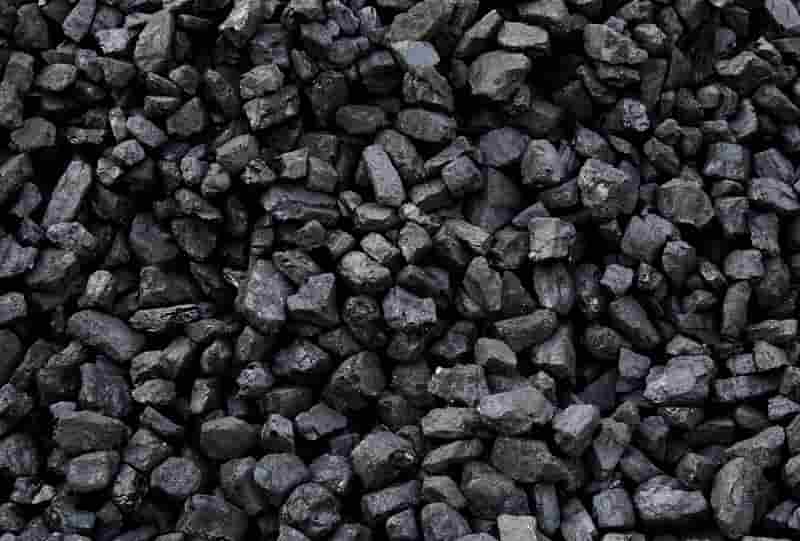BIORecycling – EU-coal – PLA 22-12-202 - Arhive
BIORecycling – EU-coal – PLA
Crude Oil Prices Trend
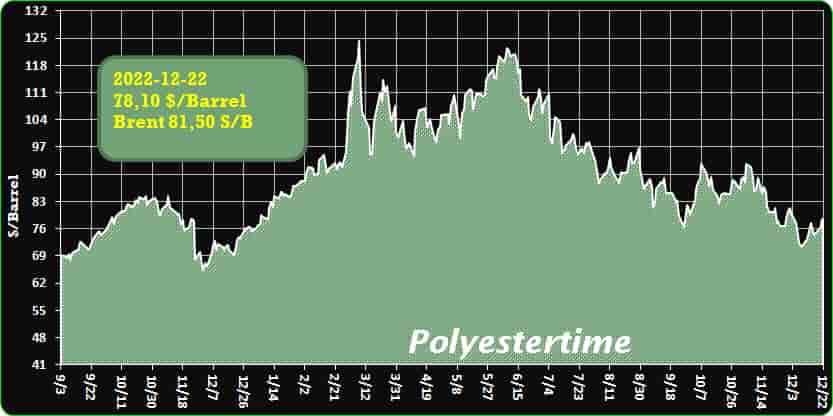
Crude Oil Prices Trend Polyestertime
-Blue Ocean Closures obtains further ALPLA investment
Blue Ocean Closures Karlstad, Värmland, Sweden
Blue Ocean Closures, the Swedish start-up developing proprietary fiber based screw caps, has obtained a second investment from co-owner ALPLA Group in order to further develop and speed up the process of bringing environmentally friendly closure solutions to market.
Quite precisely one year ago Blue Ocean Closures was founded and the ALPLA Group, an Austrian family run corporation leading in plastic packaging and recycling, partnered up as a part owner. The decision has now been made to further invest in Blue Ocean Closures, increasing possibilities to grow its sustainable operations and activities in the field of fully biobased, biodegradable and recyclable caps and lids. BIORecycling – EU-coal – PLA
”We have seen great progress, moving fast to meet the goal of developing usable fiber solutions, and as part of ALPLA’s important strategic development in circular economy, we have now decided to invest further in Blue Ocean Closures,” says Christian Zmölnig, Director Corporate Research, Development and Innovation at ALPLA Group.
Since Blue Ocean Closures’ start, ALPLA has participated closely in the development with an option to expand their engagement. Glatfelter Corporation, a global manufacturer of engineered materials, is also a founding partner of Blue Ocean Closures, the partners have come a long way since its inception.
Achievements include significant product and material, production and people development. The ALPLA management team visited Blue Ocean Closures’ production facility in Säffle in August, where the first continuous production plant for fiber based closures is located.
”It is a very important step that a fully functioning machine is already installed, up and running together with a skilled and knowledgeable team” affirms Zmölnig.
Founder and CEO of Blue Ocean Closures, Lars Sandberg, proudly comments;
”We now have a product with the potential to replace plastic closures in several important global product segments and markets. The intention is to go commercial with our fiber screw caps in 2023.” BIORecycling – EU-coal – PLA
”A dedicated and growing team and the additional investment from ALPLA is for sure evidence that we are on the right path and means that we can significantly strengthen our business resources” Lars concludes.
Blue Ocean Closures considers opening for new investors to join the company during Q1 2023 for further expansion and growth. Interested parties are advised to contact CEO Lars Sandberg directly.
www.blueoceanclosures.com www.alpla.com

-PET Collection Rate for Recycling Reaches Highest Level Ever in 2021: NAPCOR Report
The rise in the U.S. PET collection rate for recycling, including for both PET bottles and thermoforms, points to a significant rebound in PET redemption after the roadblocks presented by the pandemic.
PET collection for recycling has reached a new high. That’s according to The National Association for PET Container Resources (NAPCOR), which recently released its “2021 PET Recycling Report.” Among the first-time achievements documented in the report, NAPCOR shared that 2021 witnessed the largest amount of post-consumer PET ever collected, with bottle collection in the U.S. exceeding 1.9 billion pounds for the first time. This represents a 1.5% increase in the U.S. PET recycling rate to 28.6% up from 27.1% in 2020. In another first, in 2021, the amount of thermoforms collected in the U.S. and Canada reached its highest-ever number, at 142 million pounds.
“These rates mark two major milestones in the growth of PET awareness, appreciation, use and reuse. BIORecycling – EU-coal – PLA
“The 2021 increase is a powerful indicator that pandemic-driven disruptions to recycling services are getting back on track,” says Laura Stewart, NAPCOR executive director. “It is also important to point out that the North American rate is over the 30% recycling threshold suggested by the Ellen McArthur Foundation
. This is viewed by many industry pundits as the post-consumer benchmark for proving that recycling works in practice and scale across multiple regions representing at least 400 million inhabitants.”
“The rebound in the amount of PET bottles collected in 2021 is encouraging,” adds Tom Busard, NAPCOR chairman, chief polymers and recycling officer for Plastipak Packaging, Inc., and president of Clean Tech, Plastipak’s recycling affiliate. “PET recycling is working, but there is a need to see increased collection to meet both legislated and voluntary recycled content demands of the future.”
Supporting the concept that COVID-19 disruptions to PET recycling have finally been overcome, the 2021 recycling report indicates that:
- A significant rebound of PET was collected via deposit redemption systems, which increased by 46% compared to deposit redemption in 2020.
- For the second consecutive year, end use market consumption of rPET used in food/ beverage and non-food/beverage bottle categories, once again surpassed demand in the rPET fiber market in U.S. and Canadian markets.
- As a single category, food/beverage alone took the largest share of rPET consumption.
- The U.S. rPET textile fiber industry faced higher prices and more competition for clear rPET in 2021, but still achieved a total rPET fiber production of over 1 billion pounds. This was achieved by sourcing greater volumes of colored rPET flake (57%) and greater volumes of post-industrial rPET flake (11%) compared to 2019.
- Finally, in 2021, NAPCOR saw the first real evidence of a movement toward tray-to-tray circularity. A total of 11 million pounds of PET thermoforms were used by thermoform converters to produce more thermoforms. Also, a record 142 million pounds of PET thermoforms were collected for recycling, 73% of which was processed by PET reclaimers in the U.S. and Canada.
“At NAPCOR, we continue our work to educate the public on how PET differentiates itself from other packaging formats, allowing brand owners to leverage its recycling value,” says Stewart. BIORecycling – EU-coal – PLA
“Beyond being recyclable over and over again, PET has often-overlooked benefits—including decreased food spoilage, reduced greenhouse gas emissions, and an overall stronger environmental profile compared to other packaging materials. The more we increase awareness of PET and motivate proper, consistent recycling levels, the closer we will get to put the U.S. on par with global recycling rates and, most importantly, the greater the impact we will have on the planet.”

-EU coal consumption, production to temporarily increase – then fall
The EU, particularly Germany, will have significantly increased coal consumption and production by the end of the year, though structural decline is expected to start in the next three years, according to an International Energy Agency (IEA) report.
The IEA presented its 2022-2025 coal market analysis and forecast on Friday (16 December).
In the report, the agency pointed to global coal consumption having increased by more than 1% between 2021 and 2022, reaching an all-time high of 8,000 million tonnes (Mt).
Topping comparative consumption charts were the US and the EU, both of which recorded the largest increases compared to other regions. BIORecycling – EU-coal – PLA
Polish new far-right leader wants Russian coal imports to resume
The embargo of Russian coal should be suspended, Sławomir Mentzen, the new leader of the far-right KORWiN party said, arguing that where it comes from does not matter to consumers.
The government imposed a ban on Russian coal imports in March …
Europe breaks records without Russian gas
Reducing dependency on Russian energy sources following the country’s full-scale invasion of Ukraine has had a significant impact on Europe, and the EU in particular, the report found.
The EU’s coal consumption has increased for the second year running, reaching a record level of 478 Mt for the year, the IEA said.
In 2022, consumption was up 6% compared to the previous year.
Although the IEA did not break down consumption levels for each EU state, for 2021 it pointed to Germany recording a 19% increase and Poland at 12%, with the overall increase being 10%.
France’s reliance on nuclear power – and subsequent need for imported capacity – was also highlighted in the report as a contributing factor in the EU’s coal use. As a proportion of France’s nuclear reactors have been out of operation for some time now, 15 GW of imported capacity is needed at any given time.
As a result, imports have substantially increased, in particular as a result of the lifting of the Indonesian coal export ban.
In addition, 27 coal-fired power stations in Germany have been reopened, providing 10 GW capacity output – a reality which according to German Economy and Climate Minister Robert Habeck is “hard to swallow”. BIORecycling – EU-coal – PLA
The IEA does, however, state that the increase in consumption is “expected to be temporary”. Following a decline from 2024 onwards, consumption will fall back below 371 Mt in 2025 and a structural decline will ensue, according to the agency.
Asia topping consumer charts
Driven in particular by Europe and the US, global coal consumption has thus risen by 1.2% compared to 2021, according to the IEA, reaching the highest peak since 2013.
But production from the world’s top three producers – China, India and Indonesia – is also expected to reach a record high. China alone accounts for half the global production, up about 5% from 2021, and half of global consumption.
The IEA is confident that “the world is close to a peak in the use of fossil fuels”, and that coal will be the first to decline. But “we are not there yet,” warned Keisuke Sadamori, head of the agency’s energy market department.
Jean-Marc Jancovici, the engineer and president of The Shift Project think-tank, explained on social media that in order to comply with the Paris Agreement, global coal consumption must fall by 14% per year over the next three years.
An all-time high for renewables
However, the current crisis is expediting the deployment of renewables, energy efficiency and heat pumps, the IEA said. BIORecycling – EU-coal – PLA
Compared to last year’s five-year lookahead, the IEA’s new report predicts a boost in renewables capacity of over 2,400 GW from 2022 to 2027.
“This represents an acceleration of 85% compared to the previous five years and an increase of almost 30% [35% in the EU] compared to the forecast in last year’s report,” the report also writes.
The agency predicted that renewables are likely to account for over 90% in global electricity capacity expansion over the same period, citing the “aggressive targets” of the REPowerEU plan as the driving force.
But according to Jancovici, this is not enough to make up for the decline in coal consumption needed to meet the Paris Agreement targets and the increase in overall electricity consumption forecast by the IEA.
“We see the huge gap between talk of decarbonisation and action,” he said.
The EU’s Fit for 55 target of having 40-45% of renewables as part of the energy mixes of member states by 2030, places the EU as the world’s second-largest renewable expansion market. Only China has a more ambitious target for renewables.
Because of these targets, renewables are expected to overtake coal as the world’s largest source of electricity by 2025, with solar expected to be the world’s largest source of electricity capacity by 2027, the agency added.
-Biorecycling of plastics shows promise in its research phase. Can it be scaled?
Although still in its infancy, the newest plastics recycling technology could expand options for cleaner, more efficient closed-loop systems — eventually.
As concern about plastic waste mounts, some recyclers are taking a closer look at the emerging science around biorecycling and its ability to break down polyethylene terephthalate (PET). BIORecycling – EU-coal – PLA
How well the process works, whether it can be scaled, and whether it’s viable enough for companies to invest in are all open questions.
The U.S. Government Accountability Office recently released a two-page “spotlight” report on biorecycling, also known as enzymatic recycling. Proponents of biorecycling, the youngest technology in the plastics recycling space, believe it has the potential to help address a thorny and persistent challenge. In 2018, an estimated 35.7 million tons of plastic packaging, clothing, medical equipment and other materials were disposed in the U.S., with 91% of that going to landfills or incinerators.
“Research suggests that biorecycling of plastics could eventually help promote a circular economy in which plastic waste is continuously reincorporated into new products,” the report’s authors wrote.
Biorecycling relies on enzymes produced by bacteria or fungi to break down material. Like one form of chemical recycling, decomposition, biorecycling can then transform plastic polymers into monomers.
“It’s like the paper chains that we made as kids in school, with each of those links connected to the next one,” said Karen Howard, a director in GAO’s Science, Technology Assessment, and Analytics team, who worked on the report. Enzymes, in the case of biorecycling, “can go along and snip the connections between them, so that you end up with all the separate little links instead of the chain. That’s how you get from plastic down to its basic components [where] it’s just a tiny little starting molecule.”
The monomers that result can be used as building blocks to make new plastics of the same type and quality, or different (possibly even biodegradable) plastics. In this way, decomposition and biorecycling are unlike mechanical recycling — still the most prevalent method — which results in weaker, increasingly inferior plastics with each round of recycling. BIORecycling – EU-coal – PLA
Like with mechanical and chemical recycling (the latter of which uses high heat or chemicals to break down material), plastic is usually shredded after sorting. This increases the surface area that interacts with enzymes to speed up the process, although Howard said it isn’t essential. Additionally, the need for clean plastic may be less stringent than for mechanical and chemical recycling “because of the highly selective nature of enzymes.”
“However, that does have to be balanced with making sure that any contaminants that may deactivate or kill the enzymes don’t get into the biorecycling stream,” she said.
Over the decades, two other types of chemical recycling — pyrolysis and gasification, which transform plastic into fuels — have gained a toehold, with a growing number of plants scaling up throughout the country. Some decomposition plants are also operational or in development. Although critics point out that these processes can be energy intensive and result in a range of negative environmental impacts, they’ve nevertheless been touted as at least a partial solution for materials that can’t easily be mechanically recycled.
Biorecycling emerged as a viable possibility six years ago, after a bacterium was discovered that could almost completely degrade PET in Japan. PET— frequently used to make water bottles and polyester clothing — is the fourth-most common resin found in MSW, after linear and low-density polyethylene, polypropylene and high-density polyethylene. This is the only class of plastics that biorecycling has so far been successful in breaking down, although Howard said other enzymes are being researched that might break down polyurethane and polyethylene.
Proponents say it could create closed loop systems: high-quality plastics back into high-quality plastics. Chemical recycling can do this, too, and there is “active research into chemical decomposition of plastics to re-make new plastics, and … some companies are pursuing this route,” Howard said. But pyrolysis, by which fuel is made from plastic, is more mature as a process “and there are more active companies in this space,” according to Howard, who notes that profit margins might play a role in chemical recycling facilities’ decisions to pursue fuels.
“That’s probably better than sending it to landfill, but that’s not really what we mean by recycling,” said John Standish, technical director at the Association of Plastic Recyclers.
French company Carbios is currently the only one tackling biorecycling at industrial scale, and this is in a demonstration phase. Carbios says its process “allows infinite recycling of all types of PET waste as well as the production of 100% recycled and 100% recyclable PET products, without loss of quality,” according to the company’s website. Carbios did not respond to a request for comment. BIORecycling – EU-coal – PLA
No results have been recently released, however. “I think that tells you where the technology is,” said Standish. “I’m all for it and I hope they’re successful, but if Carbios and enzymes were a home run, [other companies] would be building plants with Carbios technology instead of chemical.”
Still, research continues. A paper published in Nature this past April modeled an enzymatic process, called FAST-PETase, which broke down whole pieces of 51 types of thermoformed PET — such as packaging materials and cookie trays — in anywhere from a few hours to one week at 50 degrees Celsius.
“Lower temperatures certainly help in reducing overall costs and energy inputs (thus making this an even more environmentally favorable process),” wrote the paper’s corresponding author Hal Alper, executive director of the Center for Biomedical Research Support at the University of Texas at Austin, in an email. Addressing a GAO concern that enzymatic recycling might prove water-intensive, he said water could easily be recycled.
But is biorecycling scalable? In theory, said Alper. One challenge identified by researchers behind a recent review paper is “the quest for novel enzymes that efficiently operate in cost-effective, large-scale plastics degradation.” Alper notes that his process “benefits from as pure a source of PET waste as possible,” which means “advances in plastic separation processes greatly advance this area and mixed/multi-layer plastics are still an ongoing challenge in the field.” BIORecycling – EU-coal – PLA
More effective technology is beginning to emerge, including artificial intelligence with robotics and vision systems, that could also play a role. In the EU, a program called HolyGrail 2.0 is developing a digital watermarking system that embeds barcodes into a container to identify whether it’s composed of PET, for example, or even a specific grade of polypropylene. Standish foresees many barriers to implementing these new sorting technologies, but anticipates they will benefit all forms of recycling in the future.
Meanwhile, Standish maintains that enzymatic, chemical and mechanical recycling are all limited by poor sorting and aggregation. “Creating an increased collection and supply of plastics … [for] more recycling to take place,” he said, “has to be our single primary focus, because that’s where the feedstock will come from,” regardless of methodology.
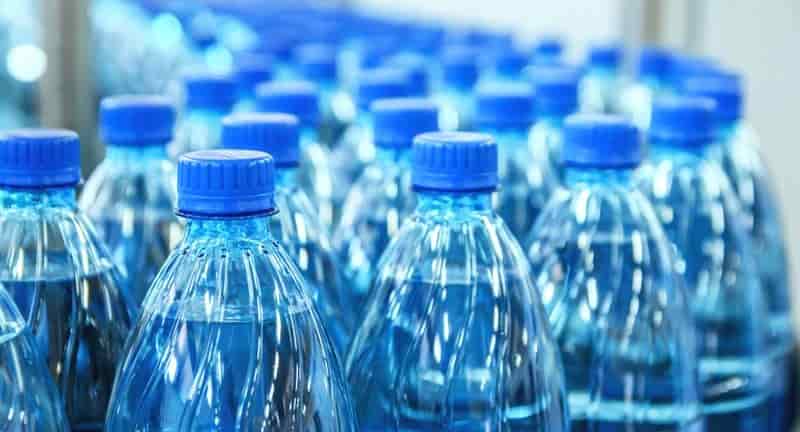
-Performance driven by PLA
Biobased compounds gain a foothold in the auto-industry
While plastics technology has generally fared very well in the automotive business, it has had to fight hard for every piece of chrome and steel it has replaced. Even today, most automotive engineers are primarily schooled firstly in metallurgy and only then in other materials.
For plant-based plastics like PLA, the challenge has been even greater and acceptance has been slow in coming.
A collaborative project from plastics specialist Röchling with BASF and Europe’s leading polymer compounder, Benvic, proposes to show that biobased materials can deliver performance – and environmental benefits. BIORecycling – EU-coal – PLA
The environmental advantages, in terms of both the carbon footprint and emission rates, tended in the past not to be able to outweigh the disadvantages in respect of thermomechanical performance and resistance to climate conditions.
Benvic has developed Plantura formulation technology that changes the game. For some time now, the company’s Plantura biobased polymer compounds have been successfully going up against more traditional materials such as polyamides or PMMA/ASA formulations, the company said.
Benvic’s compounds, with their increased thermal resistance, hydrolysis, fatigue resistance, and resistance at impact, have been found to be suitable to replace conventional polymers in engineered parts. Customised additives provided by BASF impart the required UV resistance properties required for parts continuously exposed to solar rays.
As a result, filter boxes, active grill shutters, grills, air intake ducts and engine beauty covers made of biobased Plantura PLA compounds are being readied for introduction on the market. According to Röchling, some are already in series production.
The three partners had the first results of the collaboration on display at the K fair in October. BIORecycling – EU-coal – PLA
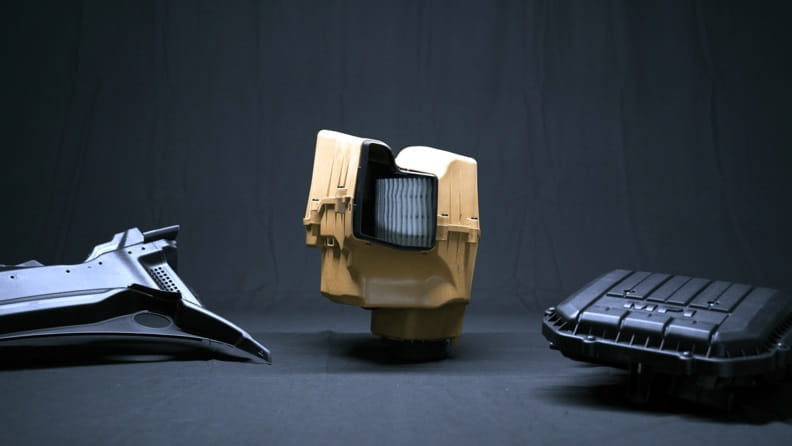
-Freepoint Eco-Systems plans plastics recycling facility near Hebron
Freepoint Eco-Systems announced Friday plans to open its first commercial-scale advanced plastics recycling facility in the Newark Industrial Park in 2024.
The Connecticut-based company said it will employ 70 and create 200 construction jobs for what it calls one of the largest advanced recycling facilities in the world, with the capacity to recycle approximately 90,000 tons of plastic waste per year using its pyrolysis technology. BIORecycling – EU-coal – PLA
Freepoint will occupy a 260,000-square foot building on 25 acres at 522 Milliken Drive, where Walker Manufacturing employed hundreds before it closed in 1994. The site is in Union Township, just north of the village of Hebron.
“It’s a really neat project involving a former warehouse of a major manufacturer here that’s been empty,” Licking County Commissioner Tim Bubb said. “Tons of plastics stay in domestic landfills now because a lot of that stuff was shipped to China, and they don’t do it anymore. If this represents a solution for the tons of plastics that we get in recycling that we can’t recycle, that’s a big deal.”
Freepoint obtains supplies of plastic waste not being recycled and uses high temperature reactors to vaporize the plastic in an oxygen-free environment, then sells the recycled liquid hydrocarbons to create new plastic, according to the company.
Jeff McMahon, the company’s managing director, said the facility will have a positive impact through plastic recycling, job creation and greenhouse gas reductions.
“Breaking ground on Freepoint’s flagship facility in Ohio marks the next big step in expanding our advanced recycling footprint in the United States and across the globe,” McMahon said in a press release. “Ultimately, we are working to contribute to a more sustainable circular economy.” BIORecycling – EU-coal – PLA
All recycled plastic feedstock produced by the facility will be sold to Shell in connection with a long-term supply agreement signed by Freepoint and Shell earlier this year. The recycled liquid product will be sent to the Gulf Coast.
It creates what Freepoint calls a circulatory process. New plastic manufactured by the petrochemical industry becomes consumer products, which Freepoint later returns to the petrochemical industry to make new plastic containers.
Freepoint states its work means less plastic waste is put into landfills or incinerated, leaving more oil in the ground. Overall, the process reduces greenhouse gas emissions by up to 90% compared to plastic made from fossil fuels, it said.
Alexis Fitzsimmons, director of Grow Licking County, said the company will make a $200 million investment in the Hebron site. She said the plastic products will be delivered by truck, but someday it may be received by train.
“We started talking with them in October 2021,” Fitzsimmons said. “No financial incentives, so our involvement with them was minimal.
“I think it’s a really great thing. It provides an outlet for plastics recycling in our market that currently go to a landfill. If you’re not in a market for a recycler to sell that type of plastic, it just goes into the landfill.”
Suppliers will include industrial customers who collect waste material as part of its process, as well as recycling companies who receive plastic they cannot recycle. Rumpke, for example, collects Licking County’s recycling products, but some products it does not recycle. BIORecycling – EU-coal – PLA
Licking County Recycling advises customers not to put plastic cups, plates, straws, bags, take-out containers, utensils and fast-food cups, straws and lids into the recycling bins. It does accept plastic bottles, jugs and tubs.
Freepoint recycles a wider variety, including grocery bags, jugs, shampoo bottles, bread bags, garbage bags, toys, 6-pack rings, bottle caps, ketchup bottles, chip bags, styrofoam containers, egg cartons, packing peanuts, baby bottles, car parts and Tupperware.
The company cited the area’s business-friendly environment and skilled workforce as reasons it chose Union Township for its facility. The company also said there are advantages to being in an industrial park and it hopes to reclaim waste material from its neighbors.
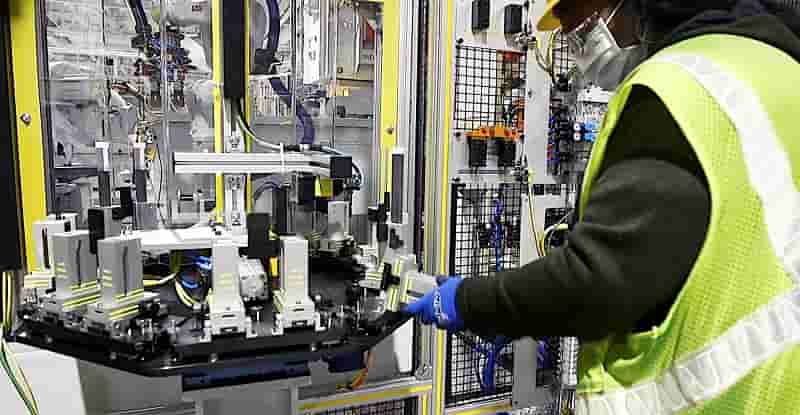
-Korean Company Develops Ultra-High-Tensile Carbon Fiber
Hyosung Advanced Materials has ambitions to rank among the global top three in the carbon-fiber sector.
Hyosung Advanced Materials has unveiled an ultra-high-tensile carbon fiber dubbed H3065 (T-1000 class), which has tensile strength and elasticity of at least 6.4 GPa and 295 GPa, respectively. The technology can be used in many sectors, including aerospace and defense. BIORecycling – EU-coal – PLA
The company’s previous effort generated H2550 carbon fiber with a tensile strength of 5.5 GPa and elasticity of 250 GPa, T-700 class. It is chiefly used in hydrogen fuel tanks, electrical cable core, photovoltaic thermal insulation, and sports equipment. The carbon fiber’s tensile strength is 10 times that of steel.
In contrast, the newly developed H3065 carbon fiber boasts a tensile strength that is 14 times greater than steel. Airplane fuselage and parts and projectile and satellite applications are envisaged.
Ultra-high-tensile carbon fiber is an indispensable material for the development of projectiles and satellites. It is much lighter than aluminum, with excellent elasticity and tensile strength, thus reducing projectile weight, lowering fuel consumption, allowing a higher payload, and helping deliver a higher propulsion force. Carbon fiber was used in the payload fairing protecting the body of the recently launched Korean satellite Nuri.
Hyosung Chairman Cho Hyun-joon commented: “[Our] feat has made Korea the third country to develop ultra-high-tensile carbon fiber after the United States and Japan, and it will contribute greatly to the development of the country’s carbon-fiber industry.”
For his part, Director Bang Yoon-hyuk of the Korea Carbon Industry Promotion Agency noted that the country has relied on imported materials for carbon fiber used in aeronautics, defense, mobility, and other market sectors.
“The development of a highly sophisticated material by Hyosung makes us expect a great turnaround in the overall situation. It means that those in the country have secured a stable supply network of materials that will serve as the basis for the growth of the country’s aeronautic [sector],” he added. BIORecycling – EU-coal – PLA
According to business observers, it brings Hyosung Advanced Materials one step closer to its objective of ranking among the global top three in the carbon-fiber sector.
According to the Fuji Economic Research Institute of Japan, the global polyacrylonitrile (PAN) based carbon-fiber market is expected to post average 10% growth annually, from 85,790 tonnes in 2021 to about 327,430 tonnes by 2035.
As for the use of carbon fiber in global markets as of 2021, wind turbine blades (39%) topped the list, followed by aerospace (15%), sports/leisure (12%), and automotive (7%).
With the development of H3065 carbon fiber, Hyosung Advanced Materials can make forays into the value-added aeronautic carbon-fiber market, which accounts for 15% of the global carbon-fiber market in terms of quantity (more than 30% in terms of value).
In 2011, Hyosung Advanced Materials developed Tansome high-performance carbon fiber, which it has produced in its factory in Jeonju, Korea, since 2013. Hyosung Advanced Materials plans to invest $765 million to increase production capacity at Jeonju to 24,000 tonnes/year by 2028. At present, it is carrying out a phase three expansion from 6,500 to 9,000 tonnes/year. BIORecycling – EU-coal – PLA
H3065 was developed through an inter-ministry technological development program started in August 2017. The Korean Agency for Defense Development and Korean Institute of Civil-Military Technology Cooperation participated in the program with investment from the Korean Ministry of Trade, Industry, and Energy.

BIORecycling – EU-coal – PLA

